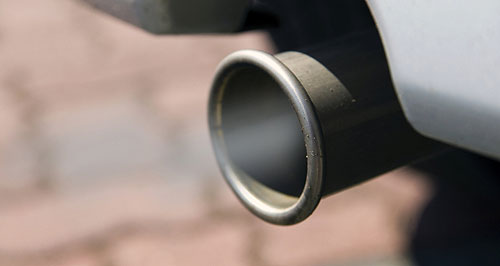Make / Model Search
News - General News - EmissionsFederal government gets serious on CO2 targetsOver to CO2: Australia's light vehicle fleet has achieved a similar annual percentage of CO2 emissions reduction as the EU in recent years, but it will probably take more than 10 years to achieve Europe's 2010 average of 140g/km. Interested parties invited to join the debate on mandatory CO2 emissions standards7 Sep 2011 THE federal government this week released a discussion paper outlining the issues involved in setting mandatory standards to reduce carbon dioxide emissions from new passenger cars, SUVs and light commercial vehicles (grouped as light vehicles) from 2015. Welcomed by the Federal Chamber of Automotive Industries, the paper sets out how reductions in vehicle CO2 emissions could be achieved. As GoAuto has reported, the prime minister quoted the benefits of a 190 grams per kilometre national average by 2015 and a further reduction to 155g/km in 2024, but refused to commit to these targets, which were made prior to last year’s federal election. The paper seeks to gain feedback on how increasingly tough CO2 reduction targets should be phased in and the regulatory models required to implement and enforce them. Between 2003 and 2010 Australia's annual rate of light vehicle CO2 reduction has been 2.1 per cent – with the EU achieving similar reductions – without the presence of mandatory standards, thanks to a combination of consumer behaviour and improvements in vehicle technology. FCAI acting chief executive Steve Payne commented: “Carbon dioxide emissions from new vehicles have reduced significantly without regulation and the industry now looks forward to working constructively with the Federal Government in developing a new standard."The FCAI anticipates that without mandatory limits, market forces alone would result in a 1.8 per cent annual reduction between 2008 and 2020, but to reach the 2024 target of 155g/km requires at least a 2.25 per cent annual decrease.  Left: FCAI acting chief executive Steve Payne. Below: Federal transport minister Anthony Albanese. Left: FCAI acting chief executive Steve Payne. Below: Federal transport minister Anthony Albanese.In additional to the 2.25 per cent scenario, five more are outlined in the discussion paper, in which reductions of between 2.1 per cent and three per cent are mandated to 2015 after which they are increased by four or five per cent. The most lenient, in which the rate of reduction to 2015 is 2.1 per cent, followed by a four per cent annual decrease in the following five years, achieves an average of 156g/km by 2020 – close to the original 2024 target. At the other end of the spectrum with three per cent followed by five per cent, 141g/km is achieved in the same timeframe. According to the document, transport accounts for 15 per cent of Australia's total CO2 emissions, of which 64 per cent come from light vehicles, a proportion that is expected to rise as other industries in Australia – especially the energy sector – reduce their output. Last year Australia's National Average Carbon Emissions (NACE) fell 2.7 per cent to 212.6g/km – well below the voluntary target of 222g/km set for 2010 five years earlier. Passenger cars and SUVs averaged 205g/km and light commercials emitted 250g/km on average. For comparison, the European Union's 2010 average was 140g/km (down 3.7 per cent) and next year it is phasing in a 130g/km limit for passenger cars, on the way to 2020 limit of 95g/km. This largely reflects Europe's different automotive landscape in which diesel power accounts for 50 per cent of new passenger car sales in the EU, with France, Belgium and Spain's diesel preference being even higher at 70 per cent. For Australia to fall into line with Europe's 2020 target of 95g/km would require a 7.5 per cent annual decrease in average CO2 emissions. Speaking in Canberra yesterday, transport minister Anthony Albanese said mandatory CO2 emissions standards would result in the average motorist saving around $600 per year due to the side-effect of improved fuel economy. “Modelling suggests Australia could be saving around 1.1 billion litres of fuel worth $1.8 billion every year by 2024,” he said. Mr Payne said that although consumers take into account fuel economy and emissions when deciding on a new vehicle, research from the National Transport Commission suggested that if every buyer chose the most efficient equivalent vehicle, CO2 emissions would be instantly reduced by 36 per cent. The International Energy Agency (IEA) believes mandatory fuel efficiency standards for light vehicles are necessary to achieve a reduction in transport sector-generated CO2 and estimates that the fuel consumption of new light vehicles could be halved by 2030 if the measures are implemented globally. It also predicts the reduction in fuel consumption would result in the overall cost of legislation to consumers being be low or even negative, while having side benefits such as improved energy security. However significant reductions in the vehicle fleet will take longer to realise due to the time taken for older, less efficient vehicles to reach the end of their serviceable life and be replaced. Mr Payne said: “It is important to remember that purchasing a more fuel efficient vehicle is only part of the solution to reducing CO2 emissions from passenger transport. A comprehensive strategy to reduce emissions from vehicles should include vehicle maintenance, removing inefficient vehicles from the fleet, driver behaviour, road congestion and public transport.” The discussion paper looks to measures proposed or implemented in the EU and US for the development of Australia's regulatory model for enforcing the mandatory CO2 reduction. Factors to be considered include how to set the targets for individual brands, identifying the data required to calculate targets and measure each manufacturer's performance and level of compliance. The government must also consider whether existing market data is complete enough to legally enforce the standards, whether new legislation must be created or if existing legislation can be modified, who will be subject to the regulations and whether brands with high-emissions ranges will be allowed to 'pool' with low-emissions brands and the penalties for non-compliance. Finding a fair way to set the each brand's target is challenging because of the difficulty involved in avoiding a bias toward a certain type of vehicle or brand. For example, if a uniform target is set, brands like Suzuki who sell mainly small low-emitting cars automatically benefit while one like Nissan, which is represented in several segments but sells a disproportionate amount of relatively high-emitting Navaras gets penalised. This could also damage local manufacturing by limiting the numbers of large cars that can be sold without the offset of low-emission vehicles from the same brands. Solutions including weighting targets based on vehicle mass and wheelbase to give manufacturers of predominantly large vehicles a break can result in encouraging other manufacturers to build larger or heavier cars in order to qualify. Making all brands adhere to the same percentage reduction can produce the opposite effect of having a uniform target, as it is more difficult to liberate large CO2 savings from cars that are already small and efficient compared with larger, heavier vehicles. There is also the question of how to reward brands who supply – and consumers who use – alternative propulsion vehicles such as electric, hybrid or biofuel. In the EU for example, E85 capable vehicles have their CO2 figure reduced by five per cent (so long as the country in which it is registered has sufficient E85 fuel outlets). In addition, the sale of one EV is counted as 3.5 vehicles in 2012-13 and manufacturers can apply for reductions in targets for vehicles proved to reduce emissions through the use of innovative technology. The enforcement of CO2 targets has taken the form of fines in the EU and US. The EU levies a penalty of 95 Euros ($A126) per g/km over the target, multiplied by the number of vehicles registered in that year. The US penalty is $US5.50 ($A5.20) per 0.1mpg that the manufacturer's average fuel economy falls short of the standard for a given year, multiplied by the number of affected vehicles in the fleet. In the US, manufacturers are permitted to bank and trade credits for early compliance and use them to offset any future non-compliance, although if these credits are not sufficient to cover the overshoot, the manufacturer is liable for a fine. The government is inviting comment on the paper to be submitted in writing via www.infrastructure.gov.au before November 30.  Read more |
Click to shareGeneral News articlesResearch General News Motor industry news |












Facebook Twitter Instagram